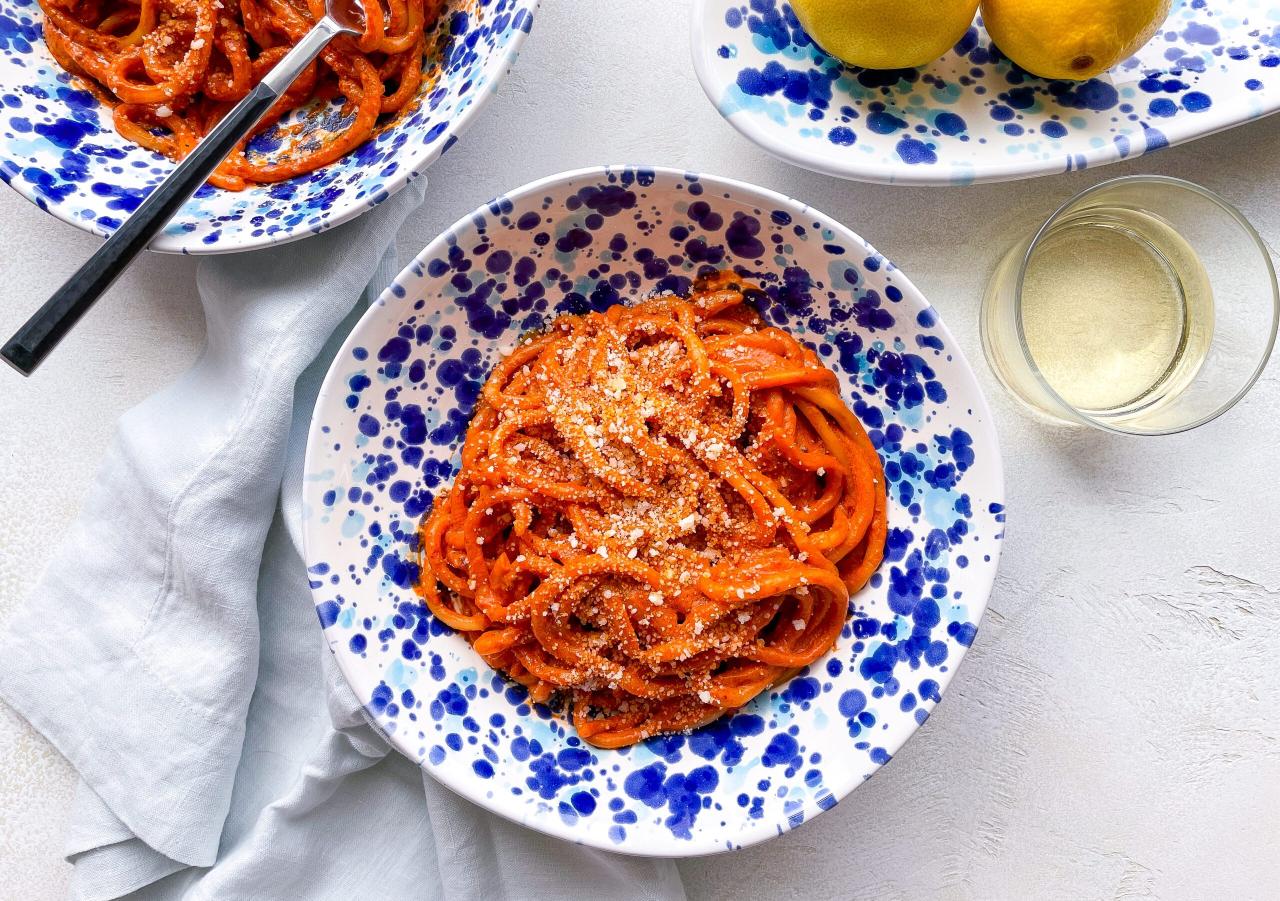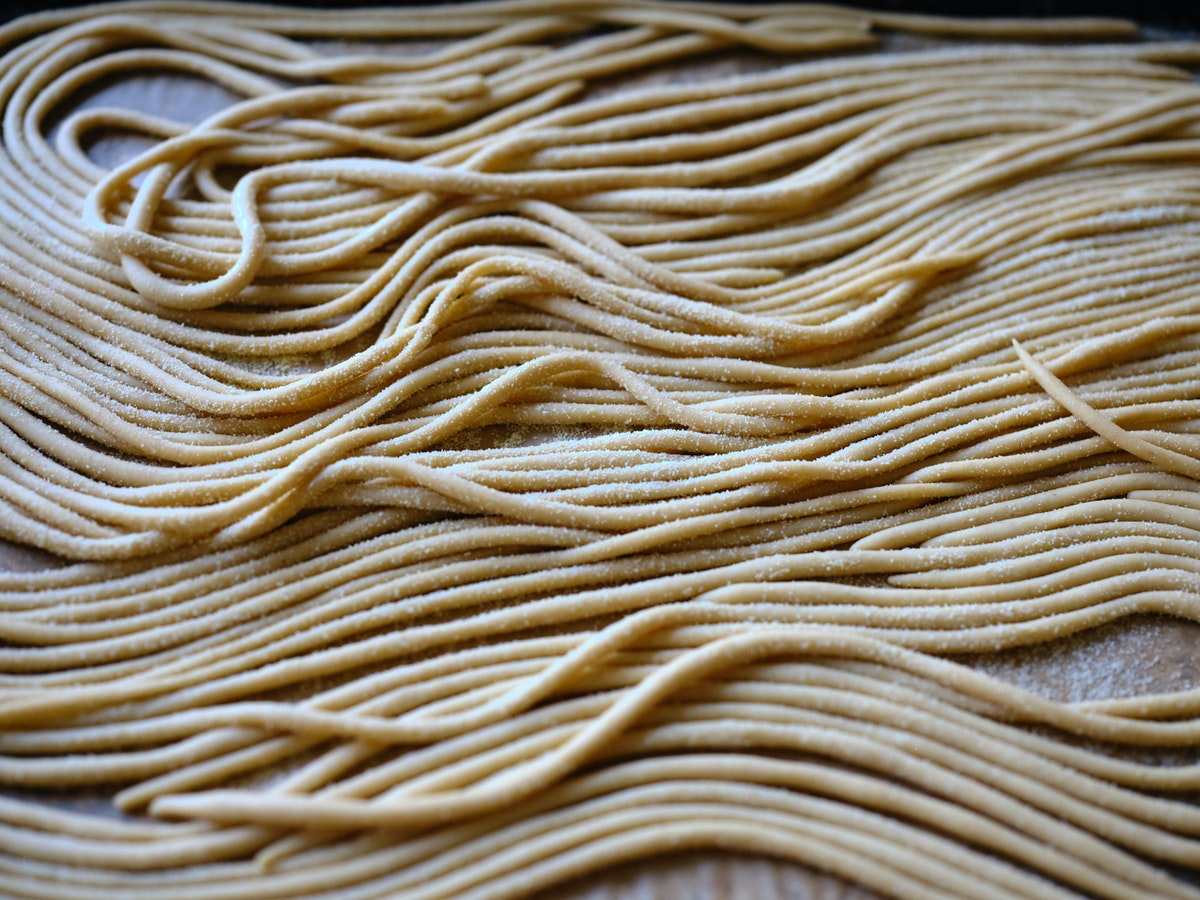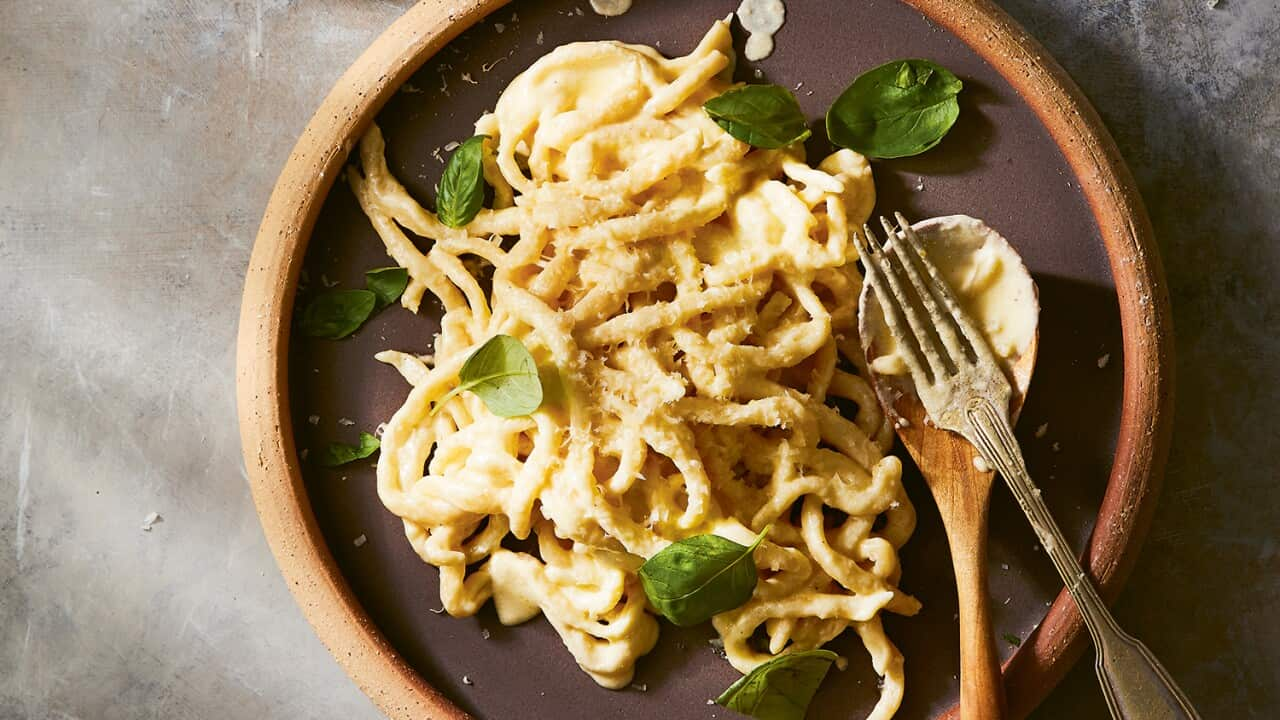Pici pasta, a staple of Tuscan cuisine, is the epitome of Italian culinary simplicity and the embodiment of comfort food at its finest. As the chill of winter begins to thaw and the promise of spring stirs in the stirring of the trees, I find myself yearning for dishes that bridge the seasons—offering warmth and heartiness with a nod to the freshness and renewal that lie ahead. That’s where pici comes into play, with its thick, hand-rolled strands that are as delightful to make as they are to eat.
So join me, fellow food enthusiasts, as we embark on a journey to the heart of Tuscany with a pici pasta recipe that promises to wrap you in warmth and leave your soul contentedly sighing. Let us roll up our sleeves and pay homage to the art of pasta making, finding solace in the flour-dusted countertops and the satisfaction of a meal well made.


Pici pasta
Equipment
- 1 food processor
- 1 pot
Ingredients
- 1 cup durum semolina
- 1 cup double zero flour
- 1 cup water
- 1 pinch salt
Instructions
- Process all in a food processor until a ball of dough forms.

- Process all in a food processor until a ball of dough forms.Flatten ball of dough to 1/2 inch thickness. Cut a strip of dough 4 inches long and on a floured surface roll under your hands and fingers until a long "rope" forms about the thickness of a drinking straw.

- Boil noodles for 2 minutes and dress with a HEARTY sauce!
Video
Notes
Cooking Tips

When it comes to cooking Pici, the key is to honor its humble origins and the craftsmanship that goes into its creation. It’s important to remember that this pasta’s beauty lies in its imperfections – the slight variations in thickness and length are not flaws but rather signs of the personal touch that has shaped them.
Begin by boiling a large pot of salted water. The generous space and water allow the Pici to dance freely without sticking together, which they are prone to do given their girth and texture.
As the Pici pasta cooks, one must be patient yet attentive. Unlike thinner pastas, Pici requires a longer cooking time to reach the ideal al dente texture. During this time, stir occasionally and gently to prevent clumping, much like you would tend to a simmering pot of stew, nurturing it to perfection.
The choice of sauce for Pici is as important as the pasta itself. A simple garlic and olive oil dressing or a rich tomato sauce can be profoundly satisfying. The robust texture of Pici makes it an excellent carrier for thicker, heartier sauces. It’s akin to finding the perfect companion who can match your own strength and depth—a harmonious partnership where both shine.
Once the Pici reaches the desired tenderness, reserve a cup of the starchy pasta water before draining. This golden liquid is a chef’s secret to achieving a silky, clingy sauce consistency, creating a symphony of flavor and texture that clings lovingly to the pasta.
The Best Way to Serve Pici pasta

When considering serving suggestions for pici pasta, one must take into account this unique texture and the way it interacts with various ingredients.
A classic way to serve pici is with aglione sauce, a spicy garlic tomato sauce that complements the pasta’s simplicity. The robust flavor of the garlic in the sauce pairs well with the substantial bite of pici. To prepare, one would simmer together peeled tomatoes, a generous amount of garlic, some hot pepper, and olive oil, until the sauce becomes rich and slightly reduced.
Another traditional dish is pici cacio e pepe, a simple yet flavorful combination of the pasta with black pepper and pecorino cheese. The cheese’s sharpness and the warm spice of the pepper create a harmonious balance with the pasta’s dense texture. The key to success with cacio e pepe is to emulsify the cheese and pasta water to create a creamy coating that clings to the pici without becoming clumpy.
For those who enjoy heartier dishes, pici can also be served with game meats such as wild boar (cinghiale) or duck ragù. The robust nature of these sauces, often slow-cooked with red wine and aromatic herbs, makes them an ideal pairing for the thickness of the pasta, which holds up well against such bold flavors.
Vegetarian options are equally satisfying, with possibilities such as pici paired with porcini mushrooms and herbs, which offer an earthy and aromatic profile. A light sauce created with olive oil, garlic, the mushrooms, and a splash of white wine can enhance the pasta without overpowering it.
When preparing pici, it is important to ensure the pasta is cooked to al dente, as its thickness requires precise timing to achieve the perfect texture. Overcooking pici can lead to a mushy consistency, while undercooking it may result in an overly chewy center.
Finally, no matter the sauce, finishing the dish with a drizzle of high-quality extra virgin olive oil and a sprinkle of fresh herbs like parsley or basil can add a fresh, vibrant note that complements the rustic nature of the pasta.
FAQs

FAQs about Pici Pasta:
- What are the classic sauces to serve with pici pasta? Pici is often served with hearty, rustic sauces. A classic is aglione sauce, a garlic-rich tomato sauce. Other traditional pairings include wild boar ragù or breadcrumbs with anchovies.
- Can pici pasta be made gluten-free? Although traditional pici is made with wheat flour, it can be adapted to be gluten-free by using suitable gluten-free flour alternatives.
- What differentiates pici pasta from other types of pasta? Pici is distinguished by its thickness and texture. It’s much thicker than spaghetti and has a chewy bite due to the hand-rolling process.
- How should pici pasta be cooked? Pici should be cooked in plenty of salted boiling water until al dente, usually for a few minutes longer than thinner pastas due to its thickness.
- Where can pici pasta be purchased? Outside of Tuscany, pici can sometimes be found in specialty Italian food stores or ordered online. However, given its simple ingredients, many choose to make it at home.
In conclusion, this Pici pasta recipe offers a delightful journey through the rustic flavors of Italian cuisine. By embracing the simplicity of traditional ingredients and the joy of handmade pasta, one can experience the comfort and authenticity that this dish provides. Whether you’re a seasoned chef or a curious home cook, this recipe is sure to bring a taste of Italy into your kitchen. For those who appreciate regional culinary arts and stories behind the dishes, Foodies of New England is an excellent resource to explore further, providing insights into the rich tapestry of New England’s food scene and beyond.